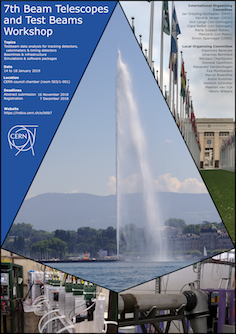Speaker
Description
The process of a detector development includes a subtask concerning the readout of data and controlling the detector. It typically consist of designing hardware in form of a readout board containing programmable logic to provide an interface to the chip, power supplies for biasing the detector chip, as well as DACs and ADCs for setting and measuring operation parameters, test pulses, etc. One also needs to write software for control and readout. This process can be repeated again and again for each new chip developed, which requires different voltage levels or different number of data lines. The CaRIBOu system, on the other hand, provides a robust, versatile DAQ system, which can be easily adjusted to the needs of different detector chips. Using such a system saves development cost and reduces the time needed to get first data from the detector. CaRIBOu is a combination of hardware and software modules that forms a stand-alone readout and DAQ system for detector prototypes. It was initially developed for testing newly developed pixel-detector chips for ATLAS and for a future CLIC detector. Adding support for a new chip is a matter of writing a piece of code performing an interface between the chip-specific features and the standard data and control interface of the CaRIBOu system. The system is based on a Xilinx Zynq System-on-Chip (SoC) architecture combining the power of a programmable hardware (FPGA) and a full Linux operating system allowing to run software in a higher programming language. It can run either stand-alone, storing data to a local filesystem, or connected via network interface to a data storage or a superior control system. The data decoding and analysis can be done either directly in the system both in software and in FPGA-based hardware, or it can be stored in a raw format and analysed offline.
The talk presents the structure and capabilities of the DAQ system and shows example applications and future plans.
